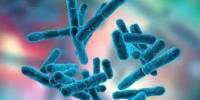Although E. coli is undoubtedly the creature that has been studied the most on Earth, researchers have just come upon a novel trait that is nearly never observed in bacteria. Normally single-celled species have displayed evidence of unheard-of multicellular stages.
E. coli is a common inhabitant of our intestines, where it serves a generally beneficial function. However, once it leaves the body, it can cause a wide range of diseases, such as UTIs, pneumonia, or food poisoning. E. coli has been closely examined throughout history to develop methods to treat or prevent illness as well as for genetic engineering because of its prevalence and possible risks.
Kyle Allison, the corresponding author of the latest study, asserted that it was “perhaps the best-studied and best-understood organism in the world.” Therefore, there has been a trend among microbiologists to concentrate more on other bacteria, especially in the last 20 years or so. We’ve discovered a few things about bacteria that have never been observed before.
The most exciting new discovery is the possibility that E. coli wasn’t always a single-celled organism. In experiments using microfluidic devices and live cell imaging, the team discovered that, occasionally, individual bacteria will come together in groups of four to create rosettes, a cellular arrangement uncommon in single-celled organisms but essential for multicellular animals’ cell division.
“Rosettes are rather significant in higher organisms, like mammals, because they initiate developmental processes like embryogenesis,” said Allison.
For up to 10 generations, the E. coli rosettes were seen to develop in chains, maintaining their four-cell configuration in each “link.” Parallel chains were identified to create the protective biofilms that cover a surface. Never before had E. coli displayed this behavior.
According to what Allison is observing, microbes may not be what we previously thought they were. “I have a sense that what we discovered is much more prevalent than we realized.”
The discovery, according to the scientists, could help guide future work in synthetic biology, the treatment of bacterial diseases, and possibly the creation of programmable biofilms for diverse purposes. It also highlights the reality that there is always more to learn, even in well-studied species.
Source: https://bme.gatech.edu/bme/news/theres-more-e-coli-meets-eye
















